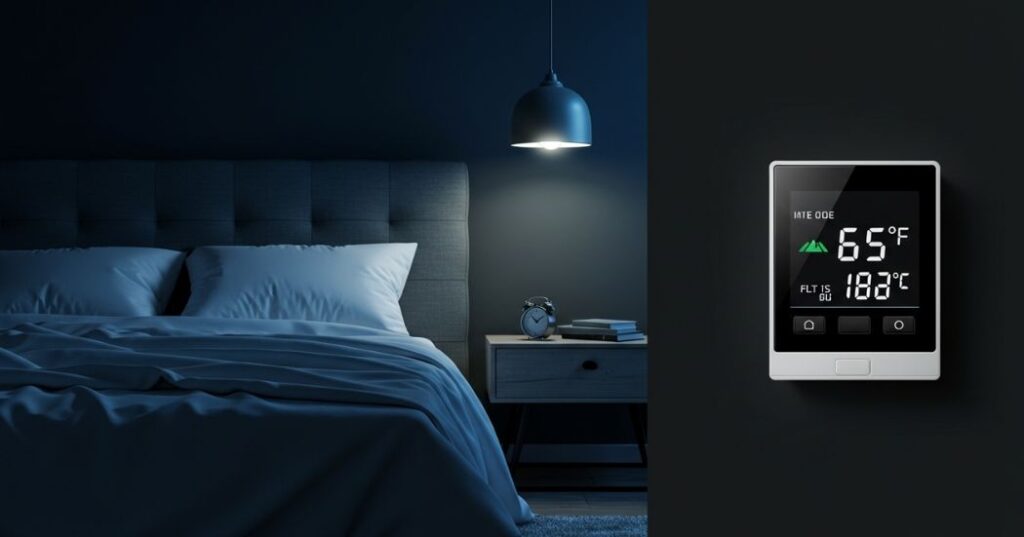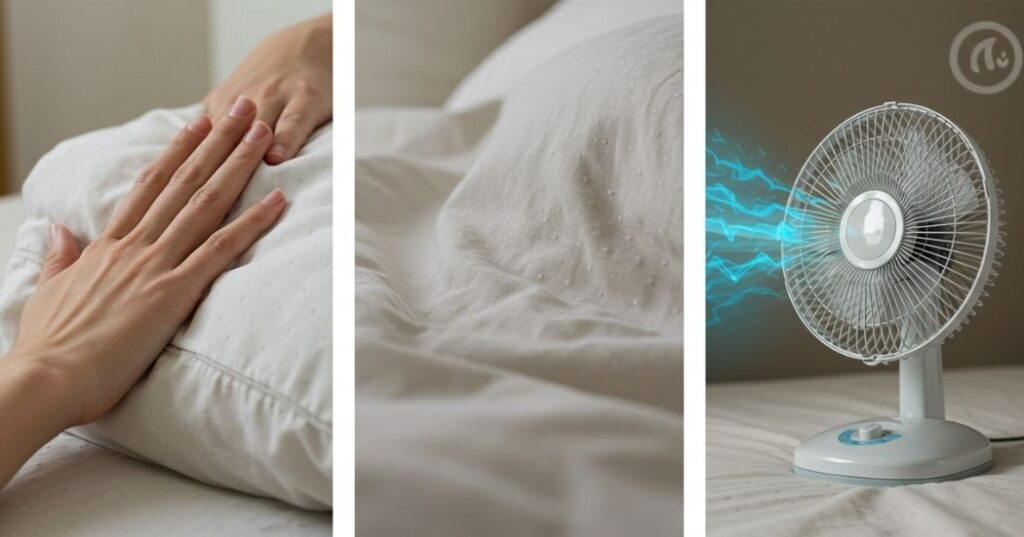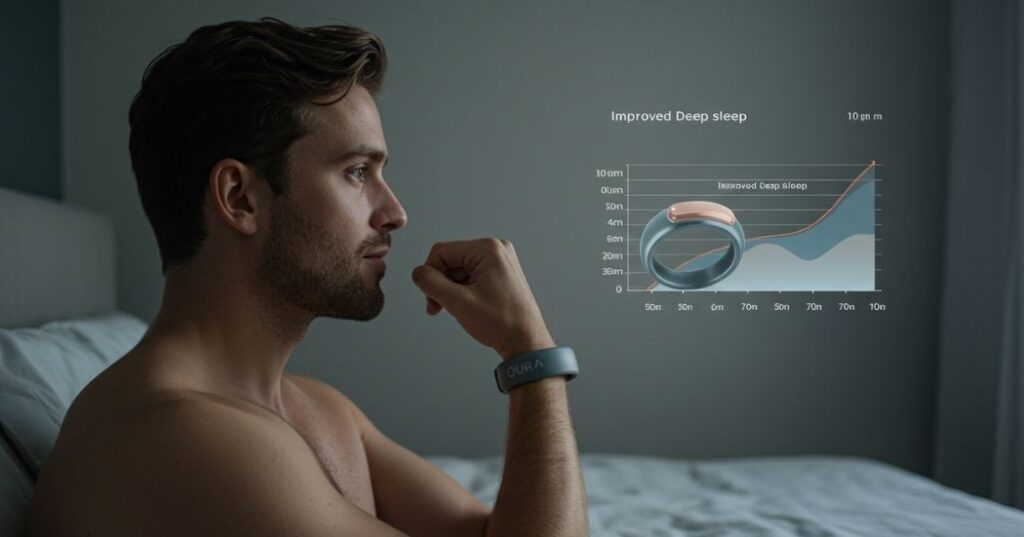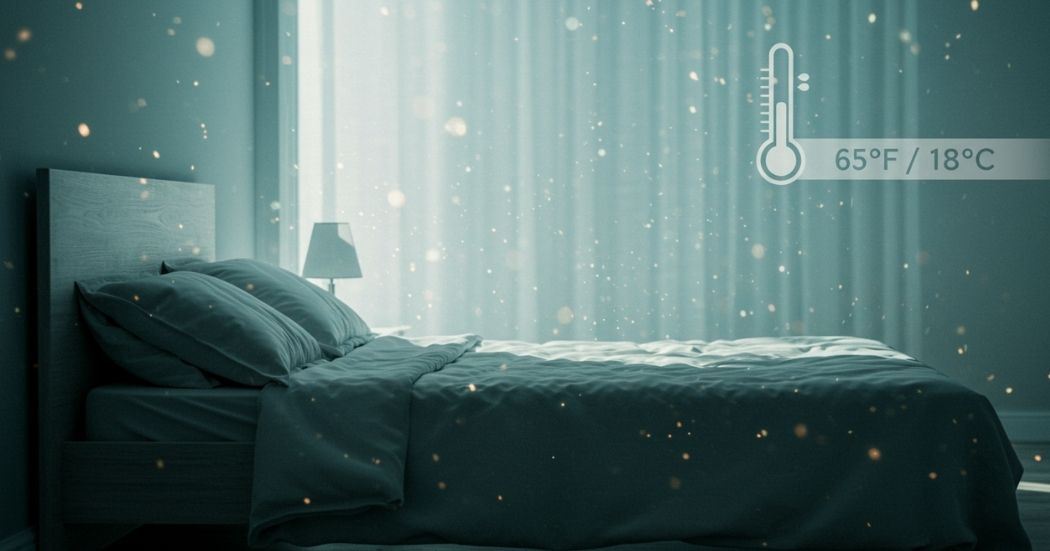The Sweet Spot for Sleep: Finding the Optimal Room Temperature for Deep Sleep Recovery
Tossing, turning, and constantly overheating at 2 a.m.? Your persistent sleep struggles might have less to do with your bedtime habits or what you ate for dinner, and far more to do with your bedroom temperature. It’s a frequently overlooked but profoundly impactful factor in sleep quality.
Let’s get straight to the science: What exactly is the ideal room temperature for deep, restorative sleep and why does it matter so much for your recovery?
✅ The Optimal Temperature for Deep Sleep: The Scientific Consensus

According to leading sleep researchers and authoritative organizations like the National Sleep Foundation, there’s a remarkably consistent recommendation for the ideal sleep environment temperature:
The optimal bedroom temperature for deep and restorative sleep falls precisely between:
60°F and 67°F (15.5°C – 19.5°C)
Why is this specific range so critical? The answer lies in your body’s natural physiological processes. As you prepare to fall asleep, your core body temperature naturally begins to drop. A cooler surrounding environment significantly aids this essential decline, helping it occur faster and remain stable throughout the night. This sustained lower core temperature is particularly vital for facilitating and maintaining the crucial deep sleep stages, where much of your physical recovery occurs.
🔬 What the Research Says: The Thermoregulatory Link to Sleep Quality
Extensive scientific research clearly demonstrates the profound link between ambient temperature and sleep architecture:
- A compelling study published in Current Biology found that even relatively small increases in bedroom temperature, specifically variations above 75°F (24°C), led to a measurable decrease in both deep sleep (Slow Wave Sleep) and REM sleep in healthy adults. These are the two most critical stages for physical and mental restoration.
- For optimal melatonin release (your body’s sleep hormone) and smooth sleep onset, your core body temperature needs to drop by approximately 1–2°F (~0.5–1°C) from its daytime peak. A cool room assists this natural dip.
- Conversely, a sleeping environment that is too warm can lead to a cascade of negative effects: it causes fragmented sleep (frequent awakenings), delayed REM onset, and a significant increase in nighttime awakenings, leaving you feeling unrestored.
Reference: Okamoto-Mizuno, K. & Mizuno, K. (2012). Effects of thermal environment on sleep and circadian rhythm. Journal of Physiological Anthropology, 31:14. This study provides a foundational understanding of how our thermal environment intricately affects our sleep cycles. Read the full study here.
🌡️ How to Dial In Your Ideal Sleep Temperature: Practical Strategies

Achieving your personal “sweet spot” for sleep temperature might require some experimentation, but these strategies can help you create an optimal thermal environment:
- Choose Breathable Bedding: Ditch synthetic or overly heavy blankets. Opt for natural, breathable fabrics like cotton, linen, or bamboo. These materials allow for better air circulation, preventing heat from getting trapped around your body.
- Embrace Sleep with Socks On: While it might seem counterintuitive, wearing socks to bed can actually help your body cool its core more effectively. By warming your extremities, blood vessels in your hands and feet dilate, allowing excess heat to escape from your core, thus facilitating the essential core body temperature drop needed for sleep.
- Utilize a Fan or White Noise Cooler: A simple fan can circulate air, providing a cooling breeze. Many fans also double as white noise machines, which can mask disruptive environmental sounds, contributing to a quieter, more conducive sleep space.
- Explore Advanced Cooling Technologies: For those who consistently struggle with overheating or live in warmer climates, specialized cooling solutions can be game-changers:
- ChiliPad/Ooler: These systems use a hydro-powered mat that circulates temperature-controlled water through tubes, directly heating or cooling your bed.
- Eight Sleep Pod: A comprehensive smart mattress cover system that integrates active cooling/heating, biometric tracking, and smart alarms.
- BedJet: A climate comfort system that blows temperature-controlled air into your bedding.
- Mattress Considerations: Be mindful of your mattress type. Memory foam mattresses, while comfortable, can sometimes trap heat. If you use one, ensure it has cooling gel infusions or an open-cell structure for better ventilation.
Pro Tip: Your feet play a crucial role in thermoregulation. Keeping them comfortably warm (e.g., with socks) while maintaining a cool room helps optimize your body’s natural cooling process for sleep.
❄️ What About Too Cold? Finding the Balance
While a cooler room is beneficial, going too far can also disrupt sleep. Temperatures consistently below 60°F (15.5°C) can cause your body to react adversely:
- Your muscles might tense up or shiver, preventing full relaxation.
- Your body’s thermogenesis (heat generation) systems could activate to warm you, which expends energy and can interrupt continuous sleep.
The goal is a comfortable balance: warm toes combined with a cool room environment creates the most ideal thermal conditions for deep, uninterrupted sleep.
Real-Life Routine: Dan’s Strategic Recovery Fix

Dan, a dedicated strength coach, frequently found himself unable to recover effectively after his intense evening workout sessions. Despite feeling physically exhausted, his sleep quality was consistently poor, leaving him fatigued and sore the next morning.
After learning about the critical importance of bedroom temperature, Dan made a strategic adjustment. He calibrated his smart thermostat to consistently maintain his bedroom at a precise 65°F (18.3°C) overnight. Additionally, he invested in a cooling mattress topper to combat any residual heat trapping. The results were dramatic: using his Oura Ring as an objective metric, Dan observed an astonishing 1.5-hour increase in his measured deep sleep duration within just four weeks. This direct improvement in his deep sleep recovery translated into significantly reduced muscle soreness, increased daytime energy, and enhanced performance in his subsequent training sessions.
Now, Dan no longer battles his body’s natural rhythms; instead, he trains with them, leveraging optimal sleep temperature as a foundational pillar of his recovery strategy.
Final Thoughts: The Simplest Recovery Tool You’re Not Using
You may not be able to control every aspect of your life or even how long you sleep every single night—but you can exert significant control over your immediate sleep environment. Finding your sweet spot for sleep temperature is often the simplest, yet most profoundly effective, recovery tool you’re likely overlooking.
By proactively managing your bedroom’s climate, you’re not just creating a more comfortable space; you’re directly supporting your body’s innate ability to achieve deep, restorative sleep, which is the cornerstone of all physical and mental recovery. Make this seemingly small adjustment, and witness a significant upgrade in your overall well-being.
Still struggling with restless nights or morning fatigue? Don’t let temperature be your hidden sleep enemy. Download our comprehensive Temperature Reset Guide to meticulously dial in your perfect nighttime climate and unlock truly deeper, more rejuvenating sleep starting tonight.
🔗 Want to Make Your Bedroom a True Sleep Sanctuary?
A cool room is just the beginning. Pair your optimal sleep temperature with daily habits that reinforce restorative rest:
- → The Perfect Wind-Down: Creating a Bedtime Routine for Optimal Sleep Recovery
- → Simple Morning Wellness Routine: A Calm Start That Supports Better Sleep
- → Daily Self-Care Routine Checklist: Your Expert Guide to Lasting Energy
🌙 Small changes to your environment and habits can lead to dramatically deeper, more restorative sleep.
📚 References
Czeisler, C. A., & Duffy, J. F. (2011). Temperature and sleep. Principles and Practice of Sleep Medicine, 5th ed., 323–334.
Okamoto-Mizuno, K., & Mizuno, K. (2012). Effects of thermal environment on sleep and circadian rhythm. Journal of Physiological Anthropology, 31:14.
https://jphysiolanthropol.biomedcentral.com/articles/10.1186/1880-6805-31-14
Raymann, R. J., et al. (2008). Skin deep: enhanced sleep depth by cutaneous temperature manipulation. Brain, 131(2), 500–513.
https://doi.org/10.1093/brain/awm325
National Sleep Foundation. Best Temperature for Sleep.
https://www.sleepfoundation.org/bedroom-environment/best-temperature-for-sleep

